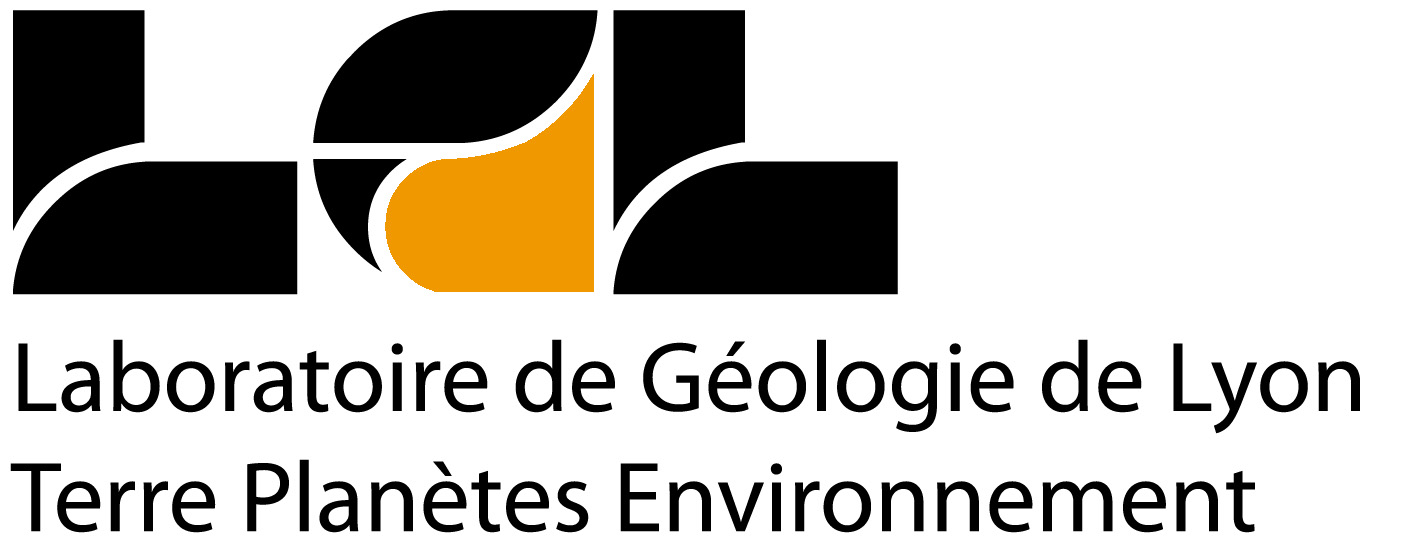Abstracts
Article Abstracts
B. Tauzin, E. Debayle and G. Wittlinger, Seismic evidence for a global low-velocity layer within the Earth’s upper mantle, Nature Geoscience, 3, 718-721, doi:10.1038/NGEO969, 2010.
Within the upper mantle, the seismic discontinuity at 410-km depth marks the top of the transition zone and is attributed to pressure-induced transformation of olivine into wadsleyite mineral assemblage. Just above the 410-km discontinuity, a layer characterized by low seismic wave velocities has been identified regionally. This low velocity layer shows poor lateral continuity and is thought to represent partial melting induced by local effects, such as the dehydration of subducted crust1 or the dehydration of water-bearing silicates beneath continental platforms in association with mantle plumes. However, some models predict that the low-velocity layer should extend globally, because the weaker water storage capacity of upper mantle minerals should induce partial melting of water-bearing silicates throughout this region. Here we report seismic observations from 89 stations worldwide that indicate a thick, intermittent low-velocity layer is located near 350 kmdepth in the mantle. The lowvelocity layer is not limited to regions associated with subduction or mantle plumes, and shows no affinity to a particular tectonic environment. We suggest that our data image the thickest parts of a more continuous global structure that shows steep lateral variations in thickness. The presence of a global layer of partial melt above the 410-km discontinuity would modify material circulation in the Earth mantle and may help to reconcile geophysical and geochemical observations.
Jeroen Ritsema, Paul Cupillard, Benoit Tauzin, Wenbo Xu, Lars Stixrude, Carolina Lithgow-Bertelloni, Joint mineral physics and seismic wave traveltime analysis of upper mantle temperature, Geology, 37, 363-366, 2009.
We employ a new thermodynamic method for self-consistent computation of compositional and thermal effects on phase transition depths, density, and seismic velocities. Using these profi les, we compare theoretical and observed differential traveltimes between P410s and P (T410) and between P600s and P410s (T660–410) that are affected only by seismic structure in the upper mantle. The anticorrelation between T410 and T660–410 suggests that variations in T410 and T660–410 of ~8 s are due to lateral temperature variations in the upper mantle transition zone of ~400°K. If the mantle is a mechanical mixture of basaltic and harzburgitic components, our traveltime data suggest that the mantle has an average temperature of 1600 ± 50°K, in agreement with temperature estimates from magma compositions of mid-ocean ridge basalts. We infer a 100 K hotter mantle if we assume the mantle to have a homogeneous pyrolitic composition. The transition-zone temperature beneath hotspots and within subduction zones is relatively high and low, respectively. However, the largest variability in T410 and T660–410 is recorded by global stations far from subduction zones and hotspots. This indicates that the 400°K variation in upper mantle temperature is complicated by tilted upwellings, slab fl attening and accumulation, ancient subduction, and processes unrelated to present-day subduction and plume ascent.
B. Tauzin, E. Debayle and G. Wittlinger, The mantle transition zone as seen by global Pds phases: No clear evidence for a thin transition zone beneath hotspots, J. Geophys. Res., 113, B08309, doi:10.1029/2007JB005364, 2008.
We present a new global study of the transition zone from Pds converted waves at the 410- and 660-km discontinuities. Our observations extend previous global Pds studies with a larger data set, especially in oceanic regions where we have been able to measure Pds travel times, sampling the mantle transition zone (MTZ) beneath 26 hotspot locations. We find significant lateral variations of the MTZ thickness. Both the maximum variations (±35–40 km) and the long-wavelength pattern are in overall agreement with previous SS precursors studies. The MTZ is generally thick beneath subduction zones, where the observed MTZ variations are consistent with thermal anomalies ranging between ±100°K and ±300°K. In Central and North America, we observe an NW–SE pattern of thick MTZ, which can be associated with the fossil Farallon subduction. We do not find clear evidence for a thin MTZ beneath hotspots. However, the 410-km discontinuity remains generally deepened after correcting our Pds travel times for the 3D heterogeneities located above the MTZ, and its topography variations can be explained by thermal anomalies between +100°K and +300°K. The depth of the 660-km discontinuity may be less temperature sensitive in hot regions of the mantle, which is consistent with the effect of a phase transition from majorite garnet to perovskite at a depth of 660 km.
Presentation Abstracts
B. Tauzin, E. Debayle and G. Wittlinger, The mantle transition zone as seen by global Pds phases: No clear evidence for a thin transition zone beneath hotspots, J. Geophys. Res., 113, B08309, doi:10.1029/2007JB005364, 2008.
We present a new global study of the transition zone from Pds converted waves at the 410- and 660-km discontinuities. Our observations extend previous global Pds studies with a larger data set, especially in oceanic regions where we have been able to measure Pds travel times, sampling the mantle transition zone (MTZ) beneath 26 hotspot locations. We find significant lateral variations of the MTZ thickness. Both the maximum variations (±35–40 km) and the long-wavelength pattern are in overall agreement with previous SS precursors studies. The MTZ is generally thick beneath subduction zones, where the observed MTZ variations are consistent with thermal anomalies ranging between ±100°K and ±300°K. In Central and North America, we observe an NW–SE pattern of thick MTZ, which can be associated with the fossil Farallon subduction. We do not find clear evidence for a thin MTZ beneath hotspots. However, the 410-km discontinuity remains generally deepened after correcting our Pds travel times for the 3D heterogeneities located above the MTZ, and its topography variations can be explained by thermal anomalies between +100°K and +300°K. The depth of the 660-km discontinuity may be less temperature sensitive in hot regions of the mantle, which is consistent with the effect of a phase transition from majorite garnet to perovskite at a depth of 660 km.
B. Tauzin, E. Debayle and G. Wittlinger, Global Imaging of Upper Mantle Seismic Heterogeneities and Discontinuities From Observations of Body-Wave Travel-Times and Rayleigh Wave Dispersion, Poster, American Geophysical Union, 2007.
The tomographic inversion of 100779 Rayleigh waveforms including higher modes has recently allowed us to constrain the SV-wave heterogeneities in the upper mantle with a lateral resolution of a few hundred kilometers and a vertical resolution of a few tens of kilometers. We are currently working to improve the resolution of our model in the transition zone by increasing the number and the accuracy of the higher modes measurements. In addition to the large-scale constraints provided by surface-waves on the 3D distribution of shear-wave velocities, we have accumulated global observations on the topography of the 410-km and 660-km discontinuities through the measurement of arrival times of converted and reflected body-wave phases. SS precursors phases can efficiently complete the analysis of P-to-s receiver functions to build a global image of the topography of the transition zone seismic discontinuities. We present results obtained from the separate analysis of each type of body-wave dataset. We are currently working on the simultaneous inversion of body waves and surface waves higher modes for the 3D distribution of SV-wave velocities and the depth of seismic discontinuities. We discuss the strategy for the inversion and present our preliminary results. [Poster]
B. Tauzin, E. Debayle, G. Wittlinger and C. Zaroli, Seismic Imaging of Deep mantle Discontinuities, Poster, Statoil International Student Conference, 2007.
The Earth reflectivity reveals deep seismic discontinuities at 410 and 660 km depth which are often interpretated as pressure-induced phase-transformations of the olivine mineral, a major constituent of the mantle. It has been shown that the depth of these discontinuities is temperature dependent and could give some insights on the nature of exchanges between lower and upper mantle. We process teleseismic records of earthquakes at 3-components broad-band seismological stations distributed all over the world. As it may be done in oil exploration, we derive the absolute depth of the discontinuities from the analysis of travel-times of reflected and converted waves at these discontinuities. P-to-S conversions give constraints on the structure under the receiver. To enhance conversion energy on seismograms, we apply a receiver-function technique which consists on deconvolving the P-wave energy from the Sv component. Underside reflections of shear-waves are more sensitive to the structure under bounce points between the seismic source and the receiver and enable a better coverage of oceanic regions. Conversion data are gathered by receivers and reflection data by common bounce points. Weak converted/reflected phases are then enhanced by stacking in the time-slowness domain the records having the highest signal to noise ratio. We finally use a radial velocity model to convert our travel-time measurements into absolute depth of discontinuities. We present our observations of perturbations of the thickness between both discontinuities. We show that these perturbations are partly correlated with expected locations of downwelling of cold subducted material from the surface. [Poster]
B. Tauzin, E. Debayle, G. Wittlinger, A global study of transition zone thickness, Poster, American Geophysical Union Fall Meeting, 2006.
We present a global study of transition zone thickness from PdS converted waves at the 410 and 660 km discontinuities. We collect several thousand three-component broad-band seismograms from GEOSCOPE, IRIS-USGS, IRIS-IDA and GT station networks. The data are low pass- filtered at 5s. The receiver functions are built by applying an iterative deconvolution of the SV trace by the P waveform. Weak 410 and 660 phases are then enhanced by stacking in the time-slowness domain the records having the highest signal to noise ratio under each station. The quality of the PdS measurements is checked by comparing our results with previous work at several seismic stations. The agreement between different studies strongly rely on the choices made in the data selection (the geographical distribution of stations, the selected range of back-azimuth at the station, the frequency range of analysis and the signal to noise threshold used in the data selection). The depth migration makes the transition zone thickness strongly dependant on the chosen velocity model. The average thickness of the transition zone is not inconsistent between different studies but the amplitude of the variations are more difficult to explain. Because PdS phases at the 410 and 660 km discontinuities have narrow Fresnel zone (few hundred of kilometres) compared to inter-station distances in oceanic areas, we do not built maps of the topography of the discontinuities. We prefer to take advantage of the recent improvement in worldwide station coverage to select data from three subsets of stations sampling equally the three major tectonic provinces that we have defined for the transition zone : «plume », « normal mantle » and « slabs». Taking into account the likely error measurements, we investigate in details whether there are significant differences between stations belonging to the different provinces, consistent with olivine structural transformation. [Poster]
B. Tauzin, E. Debayle, G. Wittlinger, Global Topography of Transition Zone Discontinuities from SS Underside Reflection and P-to-s Converted Data Sets, Poster, IPGS, 2005.
B. Tauzin, E. Debayle, G. Wittlinger, Structure of the Mantle Transition Zone from Surface-Waves and Body-Waves Constraints, Poster, SPICE R&T workshop 2, 2005.





